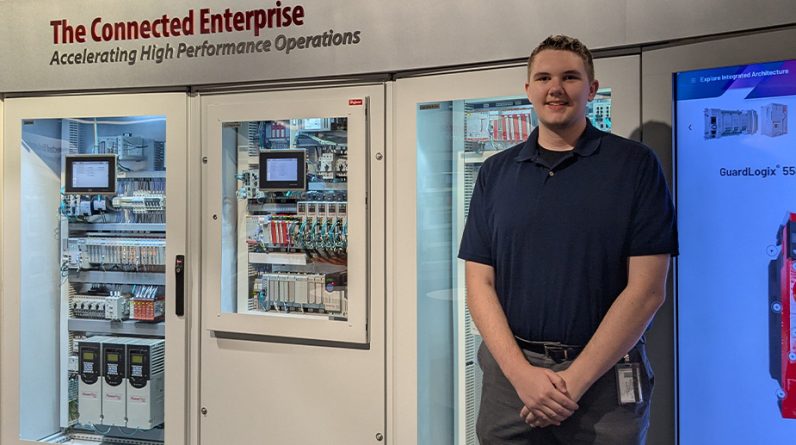
(Brendan Gaffey, Evanna Kearins, Daniel Dines at UiPath on Tour )
The conversation at UiPath on Tour London 2025 made one thing clear – generative AI, while pervasive, has yet to deliver material value at scale.
In fact, it is “everywhere except in the P&L,” as McKinsey’s Brendan Gaffey put it, pointing to an 80% adoption rate among enterprises but minimal measurable impact.
The message from UiPath executives, customers, and partners was consistent in that agentic automation – where AI agents, robots, and humans collaborate across workflows – may offer the structural breakthrough needed to move beyond this paradox.
The adoption paradox – high use, low impact
Daniel Dines, CEO of UiPath, underscored this disconnect:
Most of the PoCs (proof of concepts) that we are seeing today… they call it an agent, but in fact, it’s just putting an LLM in the context of a very small task.
He argued that the problem isn’t intent or investment but orchestration. Enterprises aren’t yet structuring AI deployments in ways that scale.
UiPath CPO Graham Sheldon quantified the landscape. In a McKinsey study of 12,000 CIOs, 92% had initiated generative AI projects, yet few had realized a return on investment. Three themes kept surfacing – AI is often confined to narrow, fragmented tasks; organizations are still cautious about trusting autonomous agents in critical workflows; and legacy complexity – with an average of over 175 systems in place – makes integration challenging.
Unlike generative AI, which typically reacts to user prompts, agents operate proactively. UiPath’s platform now enables orchestration across agents, robots, and humans using Maestro, a new control interface designed for managing long-running, cross-departmental workflows. UiPath’s AI-powered document understanding and extraction tool, uses Large Language Models to extract, classify and process data from complex documents including loan origination paperwork, brokerage statements, and patient referrals.
In a demo of a mortgage loan origination process, Senior Director of Product Marketing Yanis Broustas showed how UiPath’s BPMN-modeled (Business Process Model and Notation) agents and robots now handle document extraction, eligibility validation, task execution, and system updates – with humans looped in only when expert judgment is needed. The demo conveyed how the platform can make workflows look less like a handoff between systems and more like a coordinated digital team.
This reflects a layered approach to automation – think of robots doing the repeatable work, agents handling the reasoning, and humans focusing on oversight and decisions that require trust. UiPath’s approach centers on what Sheldon termed “controlled agency” – orchestration that allows organizations to deploy agents where they’re confident in the outcomes while maintaining the ability to “dial up or dial back the amount of agency” based on performance and trust levels.
Customer case – Barclays
Sundar Ganesh, Director of Global Process Automation at Barclays, shared the bank’s journey from traditional automation to agentic readiness. The bank’s Process Automation Center of Excellence (PACE) was established in 2019 to provide end-to-end delivery across Robotic Process Automation (RPA), Machine Learning, and workflow tools. Referring to both effort reduction and customer experience gains, Ganesh noted:
We were able to operate on a minimum 30% benefit.
Now, Barclays is working with UiPath to explore how agents can unify fragmented workflows, particularly in complex journeys like mortgages. The priority is integration without compromising governance, as Ganesh noted:
The differentiator is not the infrastructure, it’s the amount of automation we can deliver and deploy.
Barclays’ move to UiPath was based on alignment of platform roadmap and vision. But Ganesh emphasized their cloud-first, vendor-agnostic approach, noting that real transformation depends on trust, stakeholder engagement, and AI governance. The bank has developed an approach it calls “process parties” – a departure from traditional hackathons. As Ganesh explained:
We have a period of deciding which one goes into the party, and then we have a couple of weeks to prepare… We work with all the teams involved, right from the governance to our operations and the tech guys… then we take three days to actually execute, and then we move it into production.
What makes the difference? Ganesh:
This is a real problem with real capabilities that we have. It’s not an ideation, but to move things into production.
Strategic differentiation
Barclays’ methodical approach to building automation capabilities while preparing for an agentic future reflects broader industry patterns. This progression from foundation-building to strategic transformation was central to McKinsey’s analysis of how enterprises can move beyond the current AI adoption paradox.
Gaffey made a broader case for agentic AI as a business model shift, not just a productivity tool. He explained that SaaS platforms address common, repeatable workflows but struggle with the “long, fat tail” of bespoke, cross-domain processes that define enterprise uniqueness. As he observed:
Agentic hits a different value pool.
By sitting above the business logic layer, agents can connect structured and unstructured data, trigger autonomous workflows, and enable proactive orchestration. This allows enterprises to move from productivity enhancements to strategic advantage.
Gaffey described this as a clear progression that enterprises typically follow rather than discrete categories. The journey usually begins with basic individual support tools like copilots, which might improve efficiency by 10% to 20%, but the gains remain limited to personal productivity.
The next stage involves more organized task and workflow automation, where discrete processes start seeing meaningful ROI in the range of 30%. Companies then advance to automating whole domains such as HR or finance, unlocking bigger benefits by consolidating across organizational silos.
The transformative shift happens when automation spans the full customer or business journey. This is where orchestration tools and AI agents can make their most significant impact, moving beyond departmental efficiency to enterprise-wide transformation.
The ultimate goal remains autonomous AI operators that act with oversight but minimal human intervention. While still aspirational, Gaffey emphasized that the trajectory toward this capability is clear.
To get there, five themes kept surfacing in Gaffey’s framing of what successful enterprises are doing:
- Preparing their people to work alongside AI agents as collaborators.
- Building guardrails – governance models that define what agents can do and when humans step in.
- Treating data readiness as a prerequisite, not a cleanup task.
- Investing in platforms that can handle real-world complexity.
- And finally, they’re not just automating the old way of doing things, but they’re redesigning processes
Proven results at scale
The potential for measurable impact is already emerging. Fiserv, a leading global FinTech, implemented UiPath’s orchestrated approach to streamline merchant category code determination and validation – previously a painstaking manual process. What they used UiPath for was to orchestrate robots for simple data extraction and cross-checking information with web search, then deployed generative AI and agents to update and select the right codes. The validation rules they implemented delivered concrete results: 12,000 hours saved through these automations and 98% straight-through processing. The remaining two percent where agents weren’t confident were handled by humans in the loop to check and update those results.
My take
The case for agentic automation extends beyond making today’s workflows faster – it’s about fundamentally reimagining how enterprises operate. As Dines emphasized:
We delegate more and more some core aspects of our business… a mistake done by an agent can be extremely costly.
This reality underscores why trust and orchestration were key points throughout the day as major challenges to adoption. Organizations like Barclays are building systematic approaches to agent deployment, moving from “process parties” that solve real problems with real capabilities to bank-wide programs that span entire customer journeys.
ROI won’t come from deploying another chatbot or automating isolated tasks. It will come from auditable, documented automation that spans systems, processes, and decisions while maintaining human oversight where judgment and trust matter most.






